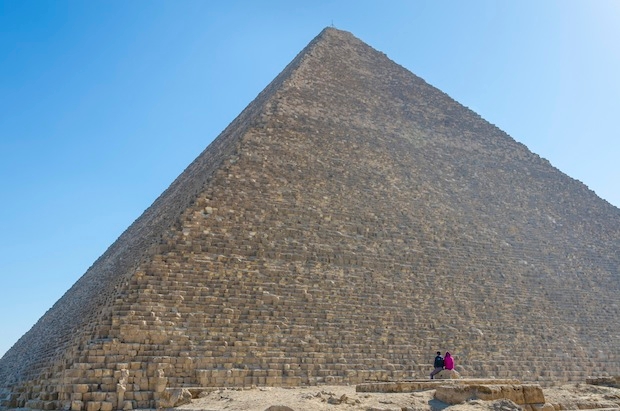It was towards dusk by the time we had given the tourist police the slip and started climbing the pyramid of Mycerinus at Giza. It was Sebastian Barry-Taylor and I and we wore white linen suits.
The 4ft blocks were easy enough to scale because erosion of the limestone had in the 4,500 years since construction weathered cavities or broken off corners so that there were plenty of hand- and footholds. We climbed quickly, looking down at the fat policemen in the desert shaking their fists up at us — but we did not rush it. To slip or stumble would be very dangerous because I could see that once one started falling down that slope there was nothing to stop one from bouncing all the way down. We did not care. We feared nothing.
At the summit of Mycerinus we found carved into the stones graffiti, some of it very old indeed, and the views were spectacular. We looked northeast towards the pyramid of Chephren, with its smooth pinnacle, and beyond it to the great pyramid of Cheops.
As the sun went down, Sebastian and I drank a bottle of good ouzo and smoked a large joint of hashish. After congratulating ourselves and exclaiming about the views and the experience, we went silent in our thoughts as the twilight dimmed. It was one of those moments burned for ever into memory, when I made promises to myself about what I would do with my life.
We were roused by the phosphorus beams of the Son et Lumière show coming on, which lit up the Sphinx and the pyramids for the tourists as the commentary began: ‘You have come tonight to the most celebrated and fabulous place in the world. Here on the plateau of Giza stands for ever the mightiest of human achievements…’
Nothing is for ever, I think now as I stand at the foot of the pyramids 30 years later almost to the day.









Comments
Join the debate for just £1 a month
Be part of the conversation with other Spectator readers by getting your first three months for £3.
UNLOCK ACCESS Just £1 a monthAlready a subscriber? Log in